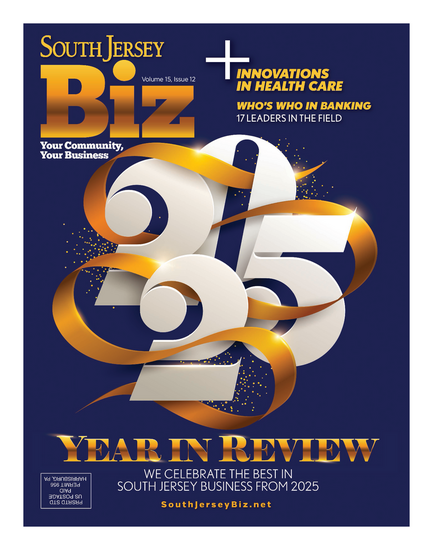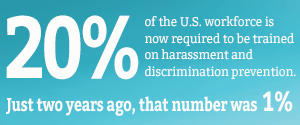When it comes to cell phones, lower prices and competition among service providers transformed what was once a luxury for the privileged few to a necessity for the masses. They evolved from the expensive “car phone,” carried in bags, to today’s tiny-by-comparison smartphones, which are used for far more than making calls and sending text messages.
With advanced computing power and high-speed Internet access available anywhere at any time, society has become constantly mobile and ever evolving as “the next big thing” seems to be constantly looming.
Last year, it was QR codes. This year, the focus will remain on furthering cell phone technology with the advancement of Near Field Communication. Haven’t heard of it yet? You will. Read on to find out more, along with other South Jersey Biz top picks for the innovative, consumer-driven technologies to pay attention to this year and how experts are saying they will transform the way we do business.
REVOLUTIONIZING WIRELESS CONNECTIVITY
“A chip inside the phone will allow for special capabilities over and beyond what phones have done in the past,” says Rich Napoli about Near Field Communication, or NFC. Napoli is a board member for the New Jersey Technology Council (NJTC), a Mount Laurel-based organization that promotes the growth of technology throughout the state. He’s also COO of ObjectFrontier Software.
NFC is a short-range wireless connectivity technology that allows two-way interactions between electronic devices in close proximity. Think of PayPass consoles available at some cash registers, only instead of touching a credit card to it, you’ll tap your phone to make payments.
“It’s like having an E-ZPass inside your phone,” Napoli explains. He says the technology will be best suited for high-volume, low-dollar transactions where speed is of the essence.
The technology will also allow for the exchange of digital content. It’s similar to what QR codes do, but users will no longer have to take the time to scan a code. Still in the pilot stage around the world, Napoli expects NFC to catch on quickly and be widespread within a few years. During its infancy, shoppers will be drawn to stores that utilize NFC.
But Napoli warns that it won’t be long before customers will avoid retailers that haven’t made the upgrade.
With its two-way technology and one-to-one marketing capability, NFC offers exciting opportunities to connect with customers. Not only can payments and coupons be accepted from a mobile phone, but rewards can also be sent back to the user.
Debbie Arnold, director of the NFC Forum, the association promoting its use, says inexpensive radio frequency (RF) tags embedded into posters, product packaging or almost anything will allow consumers to tap their smartphones and download information such as coupons, maps, train schedules, or even directions on a prescription bottle. In addition, two NFC-enabled phones in close range can communicate with each other, allowing the exchange of digital business cards, contacts and more.
“The core set of specifications for NFC technology has been completed. Tests are well underway where vendors can make sure what they built works,” says Arnold. She adds the transportation sector has taken the lead with commuter transit systems in Europe and several Asian countries utilizing NFC technology for electronic ticket purchases and seamless travel. Putting the infrastructure in place will take some time, she notes, but with major phone manufacturers among NFC Forum members as well as tech giants such as Microsoft and Sony, the complete wireless transformation is not far off.
Google has thrown its hat into the ring with Google Wallet, which is being utilized by some local companies. The free mobile app transforms NFC-compatible smartphones into virtual wallets by storing payment information and allowing customers to tap and pay at PayPass terminals. While some ShopRite stores and numerous retailers throughout South Jersey accept Google Wallet, terminals generally are not yet equipped with NFC readers. NJ TRANSIT is the country’s first public transportation agency to partner with Google Wallet and enable mobile phone users to purchase rail and bus tickets at some locations. But expect to see this technology gradually roll out in a much further capacity in the next couple of years.
THE FUTURE OF MOBILE APPS
While mobile apps may not be anything new, per se, the industry is continuously growing. In fact, a recent report from the World Mobile Applications Market indicates the mobile application marketplace will reach $25 billion by 2015. So if your business isn’t already taking advantage of apps, or hasn’t checked out what new advancements are available, now may be the time.
Also by 2015, the cell phone will overtake the personal computer as the most common primary device for Web access worldwide, according to Gartner, Inc., an information technology research and advisory company.
“People are increasingly going on the Web while busy doing something else,” says Napoli. “We need to rethink how the webpage will look and behave based on the advanced capabilities of the phone.” Companies must redesign sites for devices with smaller screens, multi-touch recognition, slower wireless speeds, and without Flash animation capability. Apps should display information with little typing and fewer clicks than accessing sites on a computer.
Businesses in South Jersey are keeping pace with the growing numbers of smartphone users. Shoppers at the Cherry Hill Mall, Moorestown Mall and Voorhees Town Center, for example, can access an app from mall owners PREIT featuring an interactive map, sales and promotions, dining guide and employment opportunities.
“We’re providing a convenient service to customers at the mall so they have all the information in one place,” says regional marketing director Caroline Quinn. With 9,000 downloads since PREIT app’s launch, increasing by hundreds each week, consumers are taking notice.
At AAA South Jersey, members utilize enhanced content like auto buying tools, roadside assistance, discounts, maps and directions, and aid reporting an accident via five mobile apps. “These apps help our members use our services wherever they are,” says Rich Bradley, spokesman for AAA South Jersey, located in Voorhees.
This is also becoming prevalent in the health care industry, where Lourdes Health System partnered with iTriage, a free consumer health care application, to provide mobile users with vital medical information including symptoms, causes and treatment options. Carol Lynn Daly, Lourdes director of marketing and media relations, says the app informs consumers about Lourdes’ services, specialties, ER wait times, hours of operation, facility locations and directions.
TEXTING TAKEOVER
Text messaging has been a part of cell phone use for quite some time, but recently, businesses have been viewing this as a new means of enhancing professional communication. Not only are texts received faster than e-mails, but people are more likely to read texts that appear highlighted on cell phones than e-mails that often go unread in unchecked inboxes. Jennifer Regina, CEO of The Marketing of Everything in Sewell, says texting is more effective for communicating with customers, as well as quicker for internal communication among employees. The younger generation especially prefers services such as Gmail chat or texting to e-mail.
Regina recommends collecting cell phone numbers when gathering customer information. Particularly effective with restaurants, retail and service-oriented companies, mobile messaging can inform customers of daily specials and discounts. “You have instant promotion ability. On a slow day, you can offer a buy one, get one free special,” says Regina. She advises limiting texts to a brief, weekly offer with an immediate reaction, like a today-only sale.
Before starting a mobile messaging program, Regina says to consider your target market and demographic. Texting may not make sense for seniors, but may be the key to connecting with younger customers. While Regina doesn’t recommend eliminating print or more traditional advertising, businesses can slash expenses when incorporating texting in their marketing program.
Danica Campanale, owner of Muscle Maker Grill in Turnersville, utilizes social media, e-mail and mobile messaging to cost-effectively bring customers to her restaurant. She added coupon texting last summer. “People are more receptive to the phone specials,” says Campanale, who kicked off the program by giving free wraps to customers who registered with their cell numbers. She advertised the code to receive texts on napkin holders, on Facebook and in e-mails. Campanale sends weekly texts that guests present for the discount.
Campanale credits much of her franchise’s success to the use of digital age technology. Within a few months of starting the Facebook page, business increased 30 percent; sales have risen 17.8 percent since she implemented the texting program.
“We are an on-the-go society. People rely on their phones for everything,” says Campanale. “I have the whole world on my phone.”
CLOUD MIGRATION
Moving to the cloud continues in South Jersey as businesses look to outsource IT functions. “The economy has driven companies away from investments in capital expenditures,” says Paul Boyer, executive director of sales for Mount Laurel-based Ancero, a provider of managed IT, hosted VoIP, cloud and carrier services. Instead of buying and maintaining local servers, technology assets are moved to a data center where users can easily and securely retrieve information at any time from a computer or mobile device. Should an emergency strike, data stored in the cloud can be recovered from any location.
With monthly costs starting as low as $99 compared to paying $5,000 to $10,000 for each server, recent price drops have made the cloud a viable option for any size business, says Randy Carbone, owner of RC Computers LLC, a networking and computer services firm in Sewell.
Carbone says is it relatively easy to grow your server in the cloud to accommodate expansion. The cloud allows for scalability so you pay only for the computing power you need. IT costs decline for maintaining in-house servers as well as software upgrades, while monthly electric bills decrease by $50 to $75 per server. Cloud computing enhances mobility, especially significant for sales or delivery personnel, so employees can access applications on the road.
Kennedy Health System is installing electronic health records (EHR) for its physician practices that will be hosted in the cloud, says Tom Balcavage, vice president of Information Systems and Technology. Cloud computing will allow the safe and cost-effective delivery of important applications to Kennedy Health Alliance physicians. “Physicians will be able to seamlessly access information in an easier, secure way, wherever they are, whether at a remote location or at the practice,” says Balcavage.
The advantages of cloud services can be far reaching, and can even help your business go green. Govi Rao, chairman of NJTC’s board of directors, says his company Noveda Technologies uses the cloud to offer real-time energy and water monitoring services to companies to help save money and protect the environment. Most companies aren’t aware of how they are using energy or if they are using resources efficiently, Rao says.
“If you don’t know where you are, how can you make reductions?”
Noveda’s hardware, software and consulting services reduce energy and water usage, achieve peak performance of energy systems, and decrease the carbon footprint. “The ultimate goal is to change behavior so customers continue to optimize energy and water consumption,” he says.
By tapping into a building’s energy and water usage, which is tracked and analyzed by a single dashboard, the technology identifies efficiencies and waste, facilitates actions for better energy management, and gives feedback about conservation measures.
Cloud-based computing enables users to access real-time data; they can even set up alerts to change energy controls while on the go. Noveda recently launched the Building EKG application, the first in a series of mobile apps to deliver data on energy and water use instantaneously wherever customers are located, allowing them to take immediate action.
OPTIMUM REACH
Whether trying to reach customers through a PC or cell phone, knowledge of search engine optimization (SEO) is a must. Today, cyberspace is so overcrowded that having potential customers find your business is a challenge, one Kenneth C. Wisnefski, CEO of Mount Laurel-based SEO firm WebiMax, helps overcome by improving visibility through the complex science of SEO.
Getting your site listed on the first page of a search engine’s results is important, but getting there is no easy feat with space for only 10 results. With Google and other search engines employing complicated algorithms to find sites most relevant to search phrases, Wisnefski offers suggestions to climb the cyber ladder.
More weight is now given to the quality of content on a website as well as engagement. He stresses the need to have blogs as well as social media channels integrated into website strategy. “Blogs are not only an excellent platform to allow you to position content regularly directed at your audience, but they also add to the volume of indexed pages and content on your site.”
This keeps information fresh and lures people back. Adding social media into the mix also increases customer interaction as well as website traffic. “Nowadays, with over 200 million Internet users online in the U.S. alone,” Wisnefski says, “companies have an almost infinite amount of online platforms to place themselves including business directories, social media, Google Places, as well as their own websites.”
Paid search is an option if you can’t achieve a top spot naturally, especially for a new website. Through pay per click advertising, a company bids on keywords to have their ad appear in the right column of result pages, Wisnefski says. The cost depends on the competition, but it may be worth it. According to a study by RevTrax, a marketing analytics platform, each dollar of e-commerce revenue generated from paid search produced another six dollars of in-store revenue.
“Internet marketing encompasses a wide spectrum of services and we definitely explore running paid and organic campaigns within a strategy,” Wisnefski adds. “The ultimate goal in the digital space is to place your brand in front of as many prospective visitors targeted to your organization, and using both paid and organic will enable you to do so.”
Lisa Ruggieri, office manager for Lee Abt, a bankruptcy attorney in Mount Laurel, says the law firm shifted from expensive newspaper and Yellow Pages advertising to focusing on search engine optimization. In the last two years, calls have greatly increased and about half of them are from clients who found them on the Internet. “The Yellow Pages have become extinct,” she says.
With Google constantly changing algorithms that determine a site’s placement—Wisnefski says there are more than 500 updates annually—Ruggieri strongly recommends hiring an expert to handle SEO. “You could be on the first page one day and page five the next,” she says. “Finding the right SEO firm is critical.”
Published (and copyrighted) in South Jersey Biz, Volume 2, Issue 3 (March, 2012).
For more info on South Jersey Biz, click here.
To subscribe to South Jersey Biz, click here.
To advertise in South Jersey Biz, click here.








